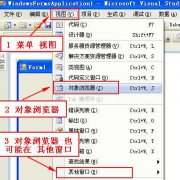C#如何使用和开发自定义配置节
在日常的程序设计中,如何灵活和巧妙地运用配置信息是一个成功的设计师的首要选择。这不仅是为了程序设计得更灵活性和可扩展性,也是为了让你的代码给人以清新的感觉。程序中的配置信息一般放在应用程序的app.config或web.config文件中,当然也可以自定义自己的配置文件。这些配置文件是以XML格式进行存储和读取的。微软也封装一些对这些配置文件操作的类,这些类存在于名字空间System.Configuration下,这个命名空间包含提供用于处理配置数据的编程模型的类型,当然为了使用还添加System.Configuration.dll程序集。
现在我们先看一下这个名字空间下的几个重要的类:
1、ConfigurationManager,这个提供用于打开客户端应用程序集的Configuration对象。
2、WebConfigurationMaManager,这个提供用于打开web应用程序集的Configuration对象。
3、ConfigurationSection ,表示配置文件中的节。
4、ConfigurationSectionCollection ,表示配置文件中相关节的集合。
5、ConfigurationSectionGroup ,表示配置文件中的一组相关节。
6、ConfigurationSectionGroupCollection ,表示 ConfigurationSectionGroup 对象的集合。
7、ConfigurationProperty ,表示属性或配置元素的子元素。
8、ConfigurationPropertyAttribute ,以声明方式指示 .NET Framework,以实例化配置属性。
9、ConfigurationElement ,表示配置文件中的配置元素。
10、ConfigurationElementCollection ,表示包含一个子元素集合的配置元素。
当然这里面这常用的是ConfigurationManager类,这个类提供了两个静态常用的静态方法:
object GetSection(string sectionName)用于读取当前应用程序默认配置的指定配置信息;
Configuration OpenExeConfiguration(ConfigurationUserLevel userLevel)将当前应用程序配置文件打开以得到一个Configuration对象。
以及两个静态属性:AppSettins获取当前应用程序默认配置的AppSettingsSection数据;ConnectionStrings获取当前应用程序默认配置的ConnectionStringSection数据。
当然由于AppSettings是一个NameValueCollection对象,因此对它的读取和设置可以直接以AppSettings[“mySet”]的形式得到,,相应的在*.config文件中的<appsettings>节下添加<add name=”mySet” value=””/>即可。
要自定义配置节配置元素,就必须要使我们的类分别继承自ConfigurationSection和ConfigurationElement类。那么实现这个两个类的对象就可以加入到配置文件的<configSection>和其他元素节点中。
这儿介绍在配置节点中加入自定义配置信息的能力(元素节点)。
1、实现一个继承自ConfigurationElement和ConfigurationSection的类,并添加的配置属性加上ConfigurationPropertyAttribute特性。
2、添加配置信息。
3、在程序中读取配置信息。
第一步:实现派生自ConfigurationSection和ConfigurationElement的类
using System;
using System.Collections;
using System.Text;
using System.Configuration;
using System.Xml;
namespace MyCustomConfiguration
{
//自定义配置节
public class CustomSectionConfiguration : ConfigurationSection
{
public CustomSectionConfiguration() { }
public CustomSectionConfiguration(string value)
{
}
//添加特性ConfigurationPropertyAttribute
//‘customAttribute‘是配置文件中的元素
//‘CustomAttribute‘是程序中要的属性;
[ConfigurationProperty("customAttribute", DefaultValue = "", IsRequired = true)]
public string CustomAttribute {
get { return (string)base["customAttribute"]; }
set { base["customAttribute"] = value; }
}
//添加特性ConfigurationPropertyAttribute
[ConfigurationProperty("customElement", DefaultValue = "", IsRequired = true)]
public CustomElementConfiguration CustomElement {
get { return (CustomElementConfiguration)base["customElement"]; }
set { base["customElement"] = value; }
}
}
//自定义配置元素
public class CustomElementConfiguration : ConfigurationElement
{
public CustomElementConfiguration() { }
public CustomElementConfiguration(string value1, string value2)
{
Value1 = value1;
Value2 = value2;
}
[ConfigurationProperty("value1", DefaultValue = "", IsRequired = true)]
public string Value1 {
get { return (string)base["value1"]; }
set { base["value1"] = value; }
}
[ConfigurationProperty("value2", DefaultValue = "", IsRequired = true)]
public string Value2
{
get { return (string)base["value2"]; }
set { base["value2"] = value; }
}
}
}
温馨提示: 本文由Jm博客推荐,转载请保留链接: https://www.jmwww.net/file/71076.html
- 上一篇:Datagridview的某些属性again
- 下一篇:win7自己的小算盘



